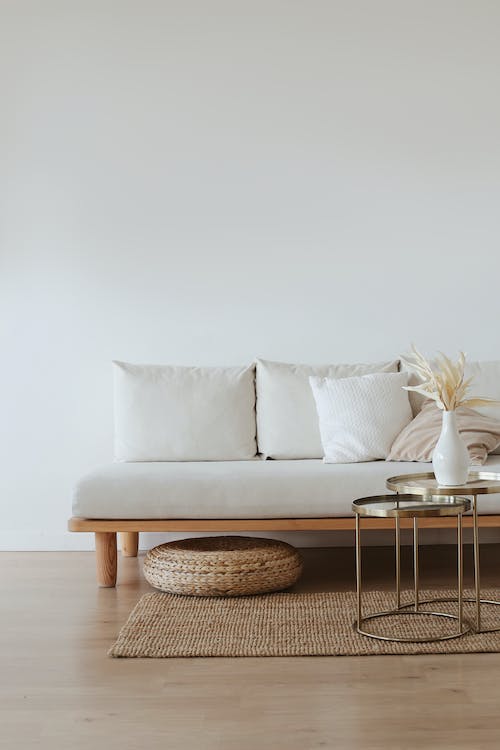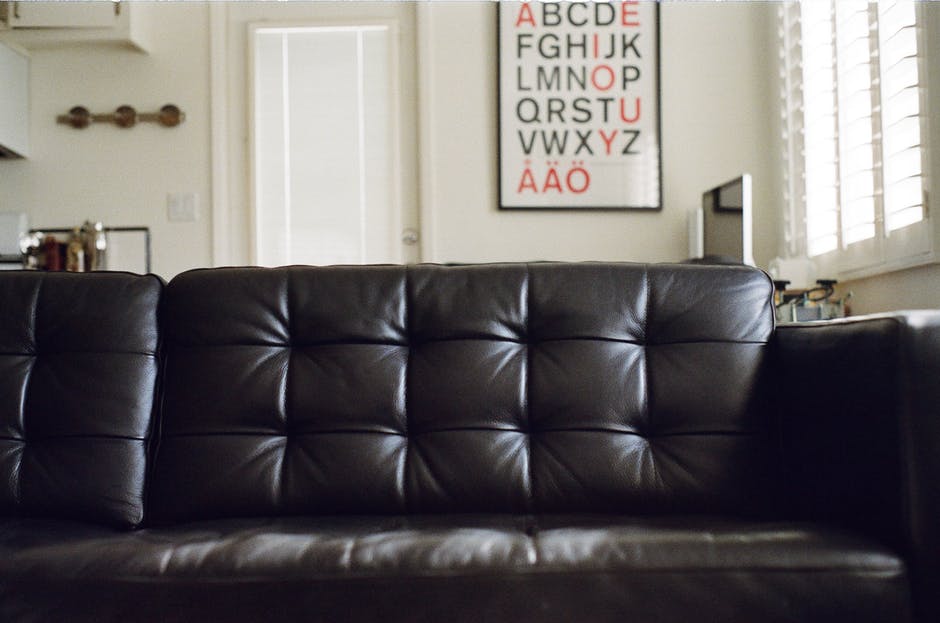Whether you’re looking for a new chair or wanting to give a new look for your sofa, you need to consider the type of upholstery fabric you’re going for. Well, first things first – upholstery is providing furniture with padding, springs, webbing, and fabric or other coverings. It is often applied with seating furniture like couches and chairs. But when shopping for an upholstered furnishing, or looking to upholster an old piece, you have to take things into consideration. Like, how easy it is to clean and maintain? How durable is the fabric? Is it resistant to stains, abrasions, and sunlight? Is it ok for a household with kids and/or pets?
The choices are many and you have to make sure that you’re choosing the material that best suits your taste and your household’s lifestyle. To clear things up, here are the types of upholstery fabrics and their characteristics:
Natural Fabrics
Natural fabrics are made from fibers that come from plants or animals. Typically, natural fabrics are soft and versatile.
1. Leather
The leather is the type of fabric that stands apart from the rest. Made from animal raw hides, choosing leather as upholstery is a great long-term investment. It looks classic and sophisticated and blends with traditional or contemporary interiors. It’s a good option for homes with pets and children, as it’s resistant to scratches, stains, and spills. It ages well, meaning, it gets cozier the longer you have it.
Leather upholstery varies greatly in price and quality, depending on its grade and category. The primary categories of leather include:
- Full-grain leather – made of whole animal hide rather than layers. It’s the thickest and highest-quality leather. Natural marks and imperfections are left intact, such as scars and pores.
- Top-grain leather – made of the strongest parts of the hide, and is smoothened to remove imperfections. This is what you will most often see in high-quality leather upholstery.
- Split leather – consists of the lower layer or underside of the hide. It’s what’s left after the full grain or top grain is removed. An artificial surface layer is laminated to the surface to make it stronger.
- Corrected-grain leather – made of animal hide that has been treated to remove imperfections. It is then given an imitation grain for a more uniform appearance.
2. Cotton
Cotton is a common plant-based fiber that is used for a lot of fabric materials, even in upholstery. It is commonly blended with synthetic materials like polyester to add texture, durability, and stain-resistance to the fabric. The best cotton blend fabrics contain 50-60% cotton. It takes well to dye, so you’d have a variety of color options. It’s also a great choice for washable slipcovers.
However, cotton soils easily, so it needs fabric protection to prevent stains. It’s soft and breathable but it’s also prone to wrinkling and stretching.
3. Wool
Wool is a natural fiber obtained from animal hair, like sheep fleece. It’s a popular type of upholstery fabric because of its resistance to soiling, fading, and wrinkling. Wool can be soft and fuzzy, and also hard and smooth. Like cotton, it’s typically blended with synthetic fibers to make it more durable, sturdier, cozier and easier to clean. Blending them also reduces the possibility of felting the fibers (bonding together until they look like felt).
Generally, wool-upholstered furniture is expensive, but it’s long-lasting. A spot-cleaner is very handy for this type of fabric to prevent stains. It also needs to be protected from insects.
4. Linen
Made from fibers of the flax plant, linen is a strong natural textile fiber. It’s smooth, soft and lustrous, and is naturally resistant to pilling, fading, abrasion, and moths. Linen is available in many different grades, with the best linen looking smooth and almost silk-like. It is often used in a tufted armchair, parson’s chairs and traditional dining chairs.
Like cotton, linen is blended with other fibers because it’s not so resilient and wrinkles easily. It also won’t withstand heavy use. It is prone to mold and mildew and does not tolerate very high humidity. Because of this downside, linen is best suited for formal living rooms and dining rooms. It’s also high-maintenance, as it would require professional cleaning.
5. Silk
Luxurious and delicate, silk is a natural fabric derived from the silkworm. It is beautiful, but due to its cost, it’s only often used in high-end fabrics. It’s the kind of fabric that creates a formal look and is quite fragile. Because of this, it’s only suitable for adult areas like formal living rooms.
Silk is available in a wide variety of patterns and colors, and in different weights, ranging from light handed to heavy raw silk. If cared for correctly, it can last longer. But it’s susceptible to fading and spills, so it must be used strategically. Because of its nature, silk is a high-maintenance fabric that requires dry cleaning.
6. Velvet
Velvet is a luxurious woven fabric that has an allure unlike any other. The direction of its fibers isn’t fixed, so it can reflect light in beautiful ways. Though its luxe like silk, velvet is more durable. Its softness and coziness make it a delight to touch, and its rich colors can add a touch of luxury or a textural contrast in a room.
Velvet can be made of natural or synthetic fibers and can be found in a variety of types and quality. Under the right conditions, velvet makes the best fabric for upholstery suited for pets.
7. Rayon
A semi-natural fiber, rayon is made out of wood chip fibers that are best suited for upholstery when blended with other synthetic fibers. It is used to imitate other fabric types like cotton, silk, and linen. When blended, the fibers achieve more sheen and become more durable.
Unfortunately, rayon is not that resistant to abrasions and can be damaged by prolonged exposure to direct sunlight. Also, it’s not as soil- and wrinkle-resistant as most synthetic fibers.
8. Chenille
Chenille is often made from natural fibers, but sometimes it’s made of synthetic fibers like rayon. ‘Chenille’ is actually a French word for ‘caterpillar,’ which is an inspiration for its soft surface pile. It has a sumptuous texture and a distinctive nap (direction of fibers), making it a good choice for comfy pieces of furniture like oversized recliners, sofas and children’s furniture. It is often blended with cotton.
Chenille gives off a luxurious texture that makes it a cozy fabric for upholstery. However, it requires a backing, for, without it, it can be prone to stretching.
Synthetic Fabrics
Also known as engineered fabrics, synthetic fabrics are textiles produced from man-made fibers. These are generally more durable than natural fabrics and are usually more resistant to fading and staining.
1. Polyester and Microfiber
One of the most popular synthetic fibers used in fabric blends, polyester is rarely used on its own when used as upholstery. It’s often blended with natural and synthetic fibers to reduce fading and add wrinkle resistance. Polyester is strong and durable and is also easy to clean and maintain. Its appearance can range from crisp to soft feel, and from bright to a dull sheen. It’s also resistant to abrasion, fading, mildew, and insects. Because of these qualities, it’s one of the best choices for outdoor upholstery.
It’s best to get a polyester upholstery in dark colors because lighter colors are prone to staining. It’s not recommended for blending with wool since it can worsen problems with piling.
Microfiber, a blend of polyester and polyamide, is softer than suede and easier to clean. It gives the appearance of real suede but is dense, durable and moisture-resistant. It’s a low-cost fabric that is commonly used for sectional couches, chaise lounges and other casual seating suited for contemporary style interiors.
2. Nylon
One of the strongest fibers, nylon is a resilient material perfect for a household with children, or if you expect the furniture to get a lot of use. It’s resistant to almost everything – abrasion, mildew, wrinkling, staining, and insects. It’s also easy to clean and maintain. Nylon has an attractive finish and is highly versatile.
On the downside, nylon does tend to fade and pill. It’s also susceptible to heat, so it’s a no-no for outdoor areas in warm climates.
3. Acrylic
Acrylic is a synthetic fiber developed as imitation wool. It’s often blended with natural fabrics to make upholstery more durable. Acrylic is a popular choice for upholstery, because it gives the plush, soft and comfy feel, yet it’s much cheaper and easier to care for. It resists stains, fading, mildew, and insects – characteristics which wool can’t achieve. It’s also a great choice for outdoor upholstery.
If you’re interested in acrylic upholstery, make sure you chose high-quality acrylics, since these are resistant to abrasion. Cheaper versions will wear easily and may pill excessively.
4. Acetate
While acrylic is an imitation of wool, acetate imitates silk. It also has a luxurious look and feel, so if you want the look of silk but not its price, acetate is a good choice. This fabric is also used extensively in blends, as it adds softness and luster. Acetate fabrics are long-wearing, resistant to pills, wrinkles, shrinking and mildew.
However, for synthetic fiber, it’s not so tough. It’s also susceptible to stains and abrasion. Because of this, acetate is not for furniture that will get everyday use. Like real silk, it’s best for formal living rooms or accent chairs that serve more as a statement than as main chairs for relaxation.
5. Olefin
A petroleum-based synthetic, olefin is produced from melted, plastic pellets. It is extremely durable and can put through heavy use. The colors are baked in and not added to the surface, so bleach can be used as an acceptable cleaner on many varieties. It’s resistant to wet conditions, moisture, mildew, chemicals, and abrasion. However, the olefin can be susceptible to heat and oils, and if not treated properly, sunlight can damage it.


